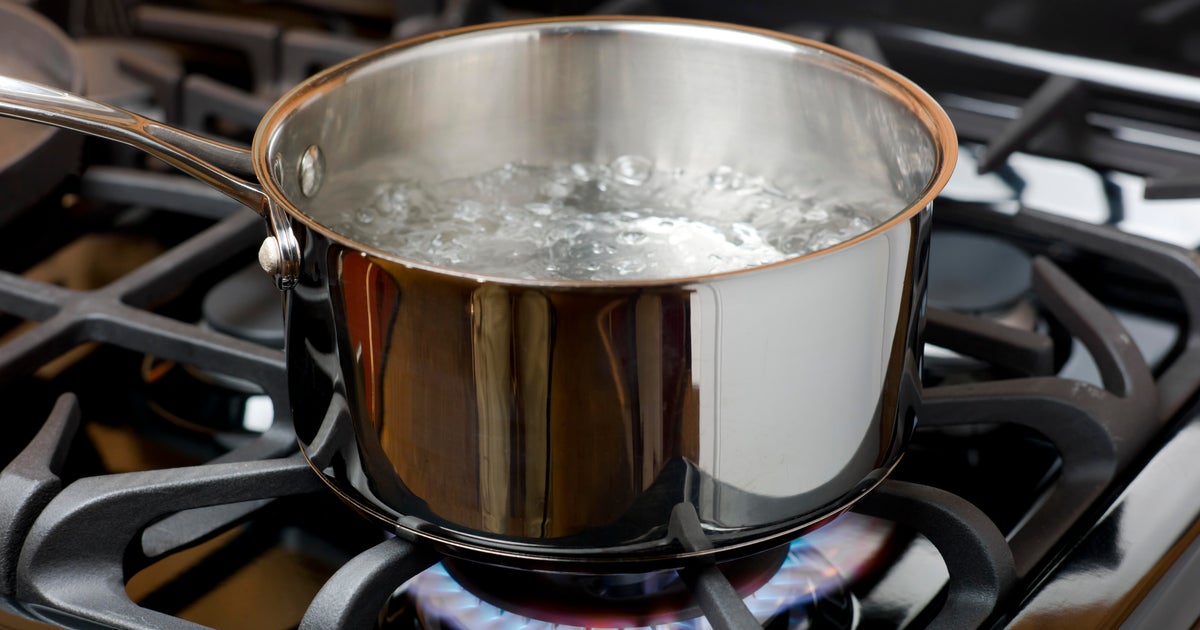Hey Ray! Powerful Pressure And Its Importance
PITTSBURGH (KDKA) -- Atmospheric pressure is a major part of meteorology, and it is always around us.
The atmosphere presses down at nearly 15 PSI. That is "Pounds Per Square Inch".
This means that every square inch has nearly 15 pounds of pressure on it -- more than the weight of a bowling ball.
We don't notice this pressure, unless it is lesser, or gone.
When the pressure drops, like when traveling up a mountain, your ears begin to "pop."
This is because the pressure inside your body starts to increase from the expansion produced in the SLIGHTLY lower pressure.
You can see an example of this with an experiment I did last year with Peeps.
Some other amazing things can happen when you remove the atmosphere's pressure.
For instance, a water balloon that cannot fit into a jar or bottle can be easily pressed into a jar with the help of the atmosphere.
NOTE: THESE EXPERIMENTS USE HEAT AND PRESSURE, AND SHOULD ONLY BE ATTEMPTED WITH A RESPONSIBLE ADULT IN CONTROL OF THE EXPERIMENTS. THIS RESPONSIBLE ADULT SHOULD ONLY CONDUCT THESE EXPERIMENTS IF THEY ARE COMFORTABLE WITH HEAT AND PRESSURE, AND HAVE SAFETY EQUIPMENT LIKE SAFETY GLASSES AND A FIRE EXTINGUISHER NEARBY.
In the video, you can see the water balloon does not fit into the jar.
If you create heat in the jar, the air will begin to expand, and rise out of the jar.
For this, we lit a small piece of paper on fire.
When the water balloon is set on top of the jar, the heat is still being pushed out, but the water balloon does not allow new air to refill the jar.
Once the fire is smothered, any leftover air in the jar condenses.
Since the pressure is significantly lower inside the jar, the atmospheric pressure pushes the balloon into the jar, rather easily, thanks to the vacuum that was created.
A vacuum is a "space devoid of matter", and the atmosphere wanted to fill it, so it pushed the balloon into the jar.
NOTE: THESE EXPERIMENTS USE HEAT AND PRESSURE, AND SHOULD ONLY BE ATTEMPTED WITH A RESPONSIBLE ADULT IN CONTROL OF THE EXPERIMENTS. THIS RESPONSIBLE ADULT SHOULD ONLY CONDUCT THESE EXPERIMENTS IF THEY ARE COMFORTABLE WITH HEAT AND PRESSURE, AND HAVE SAFETY EQUIPMENT LIKE SAFETY GLASSES AND A FIRE EXTINGUISHER NEARBY.
There is another experiment, a crushing experiment, that can be conducted using the same principles.
An empty pop can (some people say "soda" can) is actually full of air.
The air in the can is pushing outward as much as the air outside of the can is pushing inward.
This means, under normal circumstances, the can retains its shape.
If you were able to remove the air from inside the can, the pressure of the atmosphere should crush it.
In the next experiment, that is what we do!
To get the air out of the can, we will use heat and water.
By adding a little water to the bottom of the can, and heating it to a boil, you create steam.
We used a blow torch because it is fast.
You can also set the can on a frying pan, and heat it on the stove.
Use tongs to move the can, as it becomes HOT!
The steam causes the water to change to a vapor, and expand.
The heat causes the air to expand.
Both these processes start to push the air out of the can.
Next, take the heated can, and carefully flip its opening into a bowl of ice water (be careful when doing the flip, because there will be a small amount of boiling water in the can).
This cold water will cause any steam in the can to condense back into water, and it will cause the heated, expanded air to contract, too.
This, again, creates a vacuum inside the can, meaning there is no longer air pressure pushing outward from inside the can.
Now the nearly 15 PSI of the atmosphere outside of the can will have no problem crushing the pop can!
This shows that we're always under pressure, which isn't a problem if we're also full of pressure!





